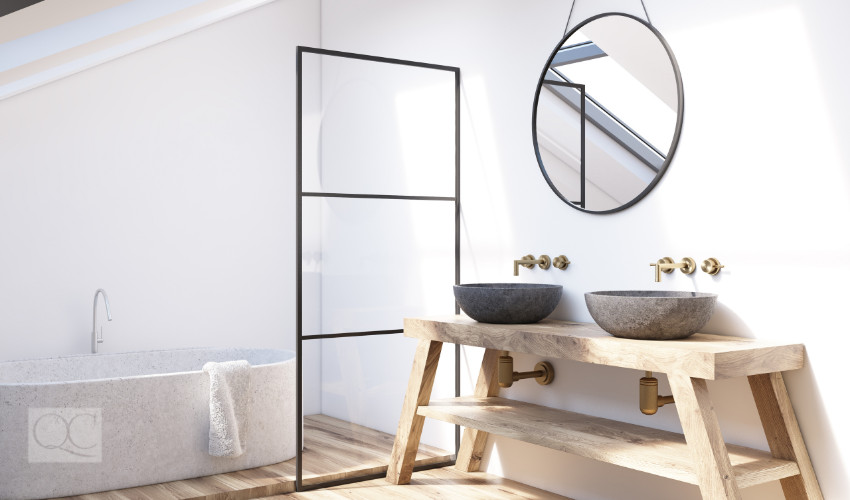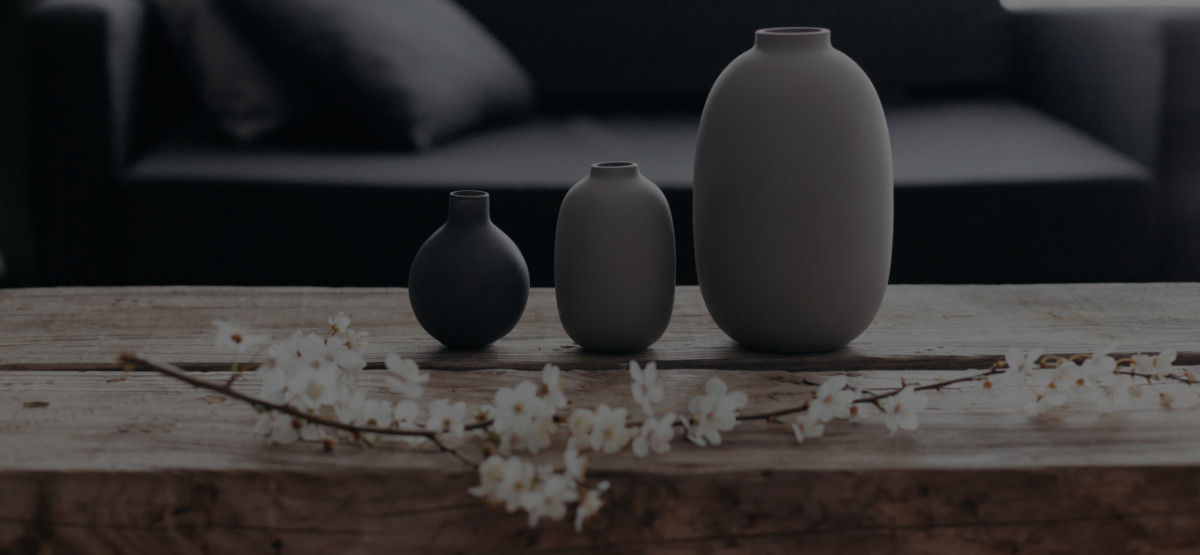Minimalism has gained quick traction in recent years. In fact, the recent success of Marie Kondo’s Tidying Up series on Netflix has introduced professional organizing to the masses! Suddenly, everyone wants to be a professional organizer. The idea of living a minimalist lifestyle surrounded by all the things that “spark joy” has inspired many households to do week-long purges in the name of tidying up.
The KonMari method is a great introduction to minimalism. While Marie Kondo has her own method of professional organizing and minimalism, it isn’t the only way to get there! We’re going to dive into what minimalism means, how it relates to professional organizing and feng shui design industries, and how to help others achieve their own minimalism goals! Keep reading…
What is minimalism?
Marie Kondo never explicitly addresses it, but she is a minimalist! Although her philosophy is rooted in Shintoism, the ultimate goal is identical to that of minimalism.
Both philosophies center on removing excessive objects that clutter your mind and physical surroundings. Keep objects that make you happy, are functional, and efficient for your needs. By thoughtfully curating your surroundings, you rid yourself of negative feelings and focus on what brings you joy. Life’s short—why surround yourself with things you’re indifferent towards, or worse, hate?

The number one thing to remember is that minimalism isn’t a one-time, spring cleaning challenge. Minimalism is a lifestyle change! Old habits are hard to break. When you take your time and ease into it, the whole process becomes a much easier challenge to tackle. Minimalism is an ongoing process where you reframe the way you think about your surroundings. So give yourself ample time to tackle the decluttering and reorganizing process—Rome wasn’t built in a day!
Misconceptions of Minimalism – Examples from the KonMari Method!
Marie never tells her professional organizing clients that there’s a specific number of each object they must have. She does not tell you that you must keep 30 books or less to be happy (a common misconception!). It all depends on the person. If you truly believe your collection of 45 books bring you happiness and value as you grow, then keep them!
Another misconception? That your home needs to be stripped down and frills-free. Most minimalists do choose a neutral color palette when decorating. But becoming a minimalist doesn’t mean getting rid of color and making your home feel clinical! It means getting rid of excess items that don’t do anything in the way of increasing your happiness. Instead, make the most of your must-have objects. Decorate your home with a variety of textures and finishes for your furnishings and appliances. That way, you’ll own items that are functional and add visual interest.

Minimalism and Feng Shui Design
While feng shui design can take years to master, there are some newbie-friendly principles that can be put into action right away. Feng shui design operates under the belief that you can actively make adjustments to your environment to optimize the satisfaction and happiness you can get out of it.
The art of decluttering is one of the first steps to transforming your home with feng shui. When you get rid of distractions like clutter, you can alleviate any mental distractions and mind blocks. You’re changing your home to allow you to reach your personal goals quicker and more easily.
For example, when you clean up your desk, you’ll be able to think more clearly and creatively. The loose paper clips and eraser shavings no longer tug on your concentration. You can then focus solely on the reason why you’re sitting at your desk in the first place—to do work.
Minimalism and Professional Organizing
A common professional organizing myth is that organizing allows people to hoard more undercover clutter. The same amount of clutter still exists, but it’s expertly hidden away from plain view to the detriment of the homeowner. This is simply not true!
Professional organizing all starts with decluttering. To evaluate whether something is useful or not, and then finding the useful items a home—sound familiar?

The primary advantage of approaching minimalism from a professional organizing perspective is being able to create storage solutions that make sense with your lifestyle. For example, you may own a microwave, a toaster, and a coffee machine. Your neighbor might use all three appliances every day, while you might have used it once last month. Most people agree that the microwave has a spot on the kitchen counter but, according to your lifestyle, you may want to store it with your stand mixer in a cabinet.
Not all decisions will be as easy as the one above. In fact, organizing can be pretty emotionally draining. If you’re at an impasse, consider the next point.
Focus on you
Like we mentioned, the KonMari method has worked for thousands of people around the world. But it may not work for you. We suggest learning one way of professional organizing, and commit to it. If you aren’t happy with your progress or the principles of a particular method, there’s no shame in switching it up. The key point here is picking a method and sticking to it! Don’t jump ship before you’ve had a chance to really see where it can take you!
Ultimately, it comes down to why you want to live a minimalist lifestyle. When you return to the question, it’ll help you refocus your efforts. If you find yourself stressed out with decluttering, refocus on the “why”.

Want to help others? Take a course!
After minimalizing your life, you may think you’re all set to start helping others. But knowing your own situation is completely different than working with a professional client. Those who want to make a career out of minimalism opts for professional training. After taking a course, you’ll be able to take an empathetic approach to applying organizing strategies to complex situations.
Remember, a client hires a professional when they need expert guidance. They need someone who understands a diversity of different living conditions and lifestyles. Having an objective third person right there with them allows them to make the hard decisions.
If you want to become an organizer, take professional organizer training. You’ll learn how to design custom organizing solutions for a client. Whether your client is a busy family or a hoarder who needs guidance, you’ll be certified to aid them.
And if feng shui sparks joy for you, take a feng shui certification course. Feng shui isn’t an easy course to take, though. But if this area of design really takes a holistic approach to your own goals and how they relate to your environment. If you’re a big picture thinker and want to design spaces with lasting positive effects on your clients, this is the path for you.
What other aspects of minimalism should we talk about next? Let us know in a comment!

Minimalism is also about pre-cycling, really thinking about an item before you purchase it. Professional organizing certainly can and should address how people buy items. Helping clients seriously think about items they are considering purchasing. Have them ask themselves questions like – what purpose will this bring into my life, am I replacing a broken item, am I stress shopping, do I really need another scented candle 😉 ? Happy organizing.